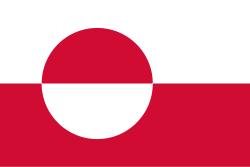Greenland's Melting Ice Reveals Rare Earth Riches Amid Geopolitical Tensions
 Greenland
GreenlandA new study has revealed alarming changes occurring in Greenland's lakes, which have shifted from crystal-clear blue to murky brown due to the impacts of global warming. Record heat and rainfall in 2022 have pushed these lakes past a critical tipping point, causing them to emit carbon dioxide instead of absorbing it.
As the normally snowy autumn transitioned into unseasonable warmth, rain fell instead of snow, melting permafrost that previously trapped greenhouse gases. This runoff carried dissolved organic materials into the lakes, leading to their darkening. The reduced sunlight penetration has adversely affected the microscopic plankton that typically convert CO₂ into oxygen, resulting in decreased photosynthesis and increased carbon release.
Research indicates that approximately 7,500 lakes have experienced this transformation, which contrasts with the gradual changes seen in other regions that typically unfold over decades. The study's lead author, Jasmine Saros of the University of Maine, emphasized the unprecedented speed and scale of these changes, suggesting that the impacted lakes may continue to emit CO₂ throughout at least the summer of 2024.
The consequences extend beyond environmental concerns as these brown lakes serve as important drinking water sources for local populations. The alterations could potentially lead to unsafe water conditions due to bacterial growth and the release of harmful metals.
Researchers warn that continued warming and extreme weather events, driven by climate change, will likely result in further alterations to Greenland's lakes and ecosystems, challenging the viability of drinking water sources for the region's residents.
 Greenland
Greenland Greenland
Greenland Greenland
Greenland